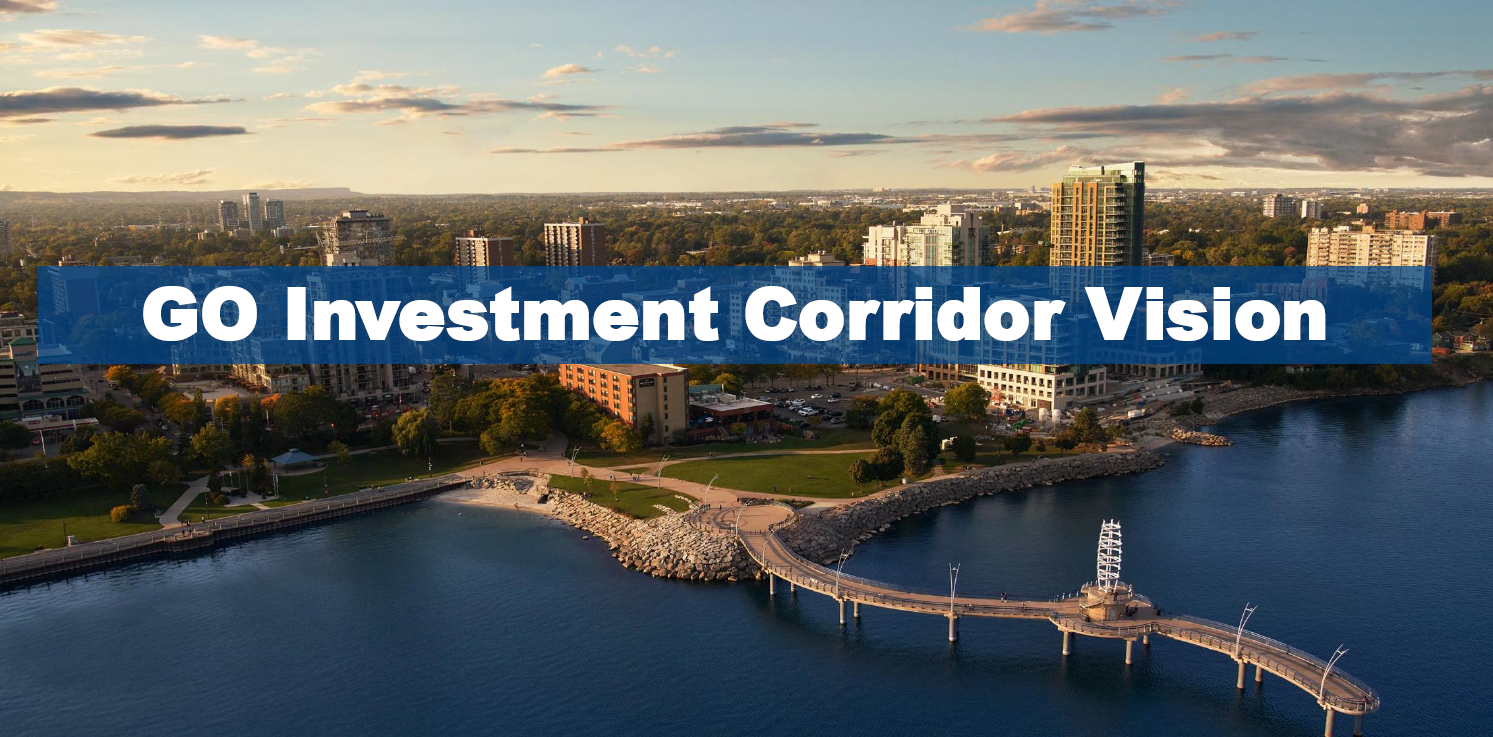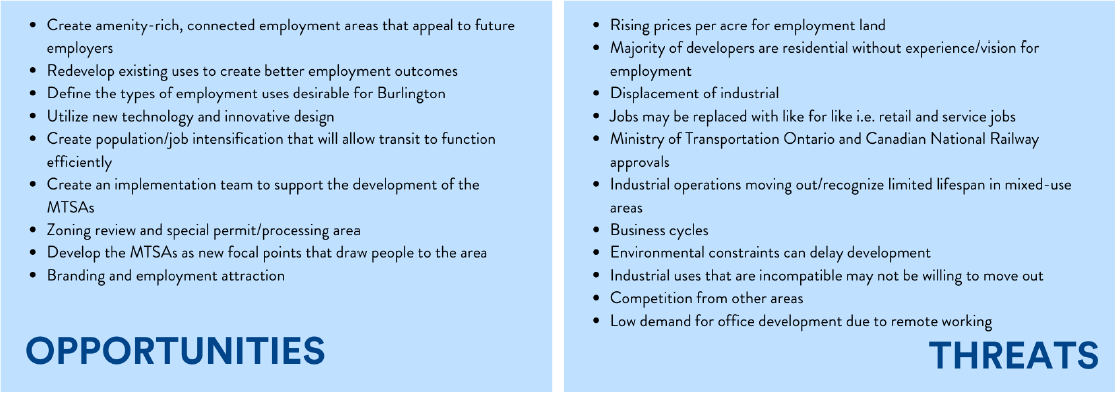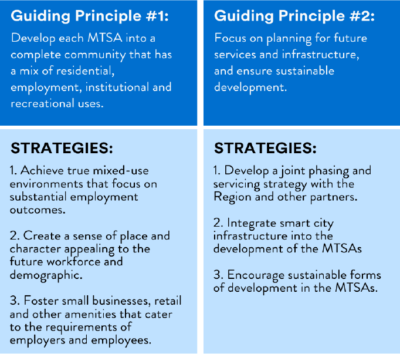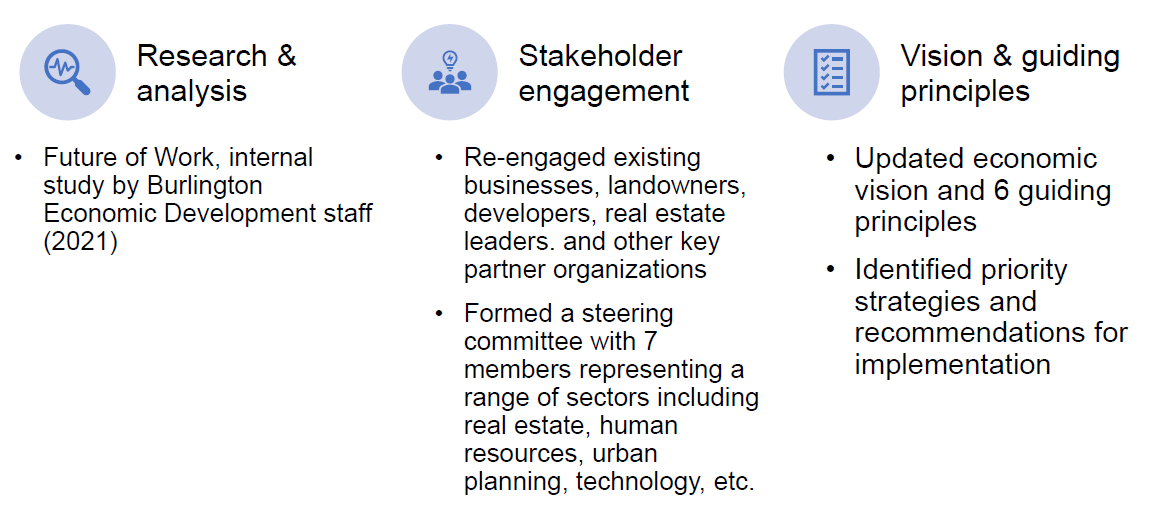 By Pepper Parr
By Pepper Parr
July 20th, 2022
BURLINGTON, ON
When Anita Cassidy, Executive Director, is presenting to Council, she finds herself speaking very quickly on issues that are important.
The agenda for any one day is often full and she seems to feel that she isn’t going to be given the time she needs.
Unfortunate because the picture she paints isn’t always rosy.

Anita Cassidy, Executive Director, Economic Development Corporation
She said earlier this month that “…we had a significant shift in our economic environment. In that time that we had it on pause, we had to reflect the realities of COVID-19 and look at the potential impacts. We also had the shift of the UGC to Burlington GO MTSA.”
The Economic Development Corporation, in its report to Council set out the background that they expdct the city’s economy to build upon.
They maintain the MTSAs provide the potential to create complete communities, expand the tax base, and provide a destination for employment growth for future generations. The MTSA developments will increase transit usage and help to make Burlington a destination while lowering carbon emissions. Burlington Economic Development has been working with the City of Burlington to develop an employment vision for the MTSAs and an implementation plan that positions us to expand our tax base through employment attraction and branding opportunities, as well as ensuring we continue to retain key industrial employers and other employment uses associated with the MTSAs.
This economic vision for the three MTSAs has been undertaken through the GO Investment Corridor Project.

“So what did that mean for unemployment attraction and retention perspective? Cassidy added: “We also wanted to make sure that we addressed any market and policy changes; as I mentioned, there were a number of policy changes in the background, ROPA 48 and 49 is coming down, we had the provincially significant employment zones for the province: a lot of policy changes to take into effect here.
“One of the key pieces of research we did was on taking into account the impacts of COVID on the office and retail environment, and what could that look like? The industrial environment for COVID, as I mentioned to counsel before, largely hasn’t shifted, as that is an in person activity. We’ve seen our industrial getting stronger through COVID. So we focused in on office and the retail.
“We had stakeholder workshops to validate those findings and hear from our developers and our businesses and our real estate, commercial brokers, what has changed over the last two years.
“Our assumptions were right here what we need to integrate in here.
“We had a subcommittee of our board reinstated with external experts to provide their expertise and then we integrated those back into the six guiding principles and the overall vision that we developed.
“There was nothing surprising from the SWOT analysis perspective. It’s everything that we’re seeing in the market already.


“We’re seeing that not unexpected displacement of existing businesses. And what we want to see is that the right kinds of businesses are retained There were examples of business displacement that have happened already over the last couple of years. We had one shop go to Mexico. They were a great employer – 150 high tech industrial jobs that ended moving operations to Mexico; part of that was they couldn’t secure a long term lease, and we don’t have sufficient employment lands to replace employers like that.
“We’ve gone from 27 hectares of shovel ready land back in 2015 to down to 14 now; that’s less than half. So this is a really a key focus area. We need to make sure that we can integrate these existing businesses as well as attracting new businesses to the MTSA developments – that is really going to be critical to achieving both job growth and that great split of tax base where we have commercial and industrial taxes to help keep our residential costs low as well.
“Our Go investment corridor vision has six guiding principles.

 “To effectively develop each MTSA into a complete community that has a mix of residential employment, institutional and recreational uses a clear mission statement and understood and agreed upon objectives are in place.
“To effectively develop each MTSA into a complete community that has a mix of residential employment, institutional and recreational uses a clear mission statement and understood and agreed upon objectives are in place.
 “When we started this project, back in 2017, we took a pretty narrow economic development lens. And as we sat down with stakeholders, and we did workshops with people, we realized that the future of work at these GO stations is going to be very different from the type of employment development we’ve had in the past.
“When we started this project, back in 2017, we took a pretty narrow economic development lens. And as we sat down with stakeholders, and we did workshops with people, we realized that the future of work at these GO stations is going to be very different from the type of employment development we’ve had in the past.
“Workers of the future do not want to work at isolated employer locations where they have to get in their car to do everything and they don’t have those communities around them. That’s what’s going to be the attractors to those MTSA locations – it’s going to be like a mini downtime environment where they’re going to be able to have all of those facilities in one spot while also being able to get on the go train and access those communities and to attend meetings in downtown as well.
“Our second guiding principle is to focus on planning for future services and infrastructure and secure sustainable development which means looking at integrating the right kind of infrastructure but also understanding in advance what the infrastructure needs are and planning not just for yourselves as a city, but with our regional partners as well.
“We’ve already heard the region is a huge part of this from a policy approval perspective, but also from an infrastructure and servicing perspective. If we don’t have the right infrastructure planned and in place then we can’t support the levels of development that we’re going to see.”

There is a significant amount of work to be done to ensure that all the players understand and buy into what is proposed. Work done in 2017 – 2019

Work done during 2021 and 2022 – it is an ongoing process.
The planners are now creating Area Specific Plans for each of the MTSA – which set out a clear path as to where the development can take place.
The Vision has been clear since the current Council took office. The moving of the Urban Growth Centre north of the downtown area has made it possible for the city to undergo the growth the province has imposed. That growth will create the tax base need to cover the cost of making the city a place where seniors and those raising a family can live in comfort.
The challenge at this point is to get through the Ontario Land Tribunals and have an Official Plan that makes the vision possible




















In the list of the top 500 fastest growing companies in Canada only 3 are based in Burlington. If Burlington has such great services, robust amenities, great transportation corridors, educated workforce, access to markets, etc., then why can’t we attract more start-ups and high tech firms?
https://www.theglobeandmail.com/business/rob-magazine/top-growing-companies/article-canadas-top-growing-companies-2021/
This should be the central question the EDC should be focusing on, not providing a philosophical justification for real estate developers to throw up more thirty storey high-rises and office towers next to train tracks all in the name of defending the provincial government’s twisted development strategy.
The other fact is that knowledge workers (presumably this is the target market and demographic Ms. Cassidy is focusing on since Burlington does such a pitiful job in attracting established manufacturers to locate here) can live anywhere. Sappy statements like “Workers of the future do not want to work at isolated employer locations where they have to get in their car to do everything and they don’t have those communities around them” clearly ignores the reality of the past two years and the interconnected nature of today’s workplace. By example, 60% of Shopify’s workers live outside Canada.